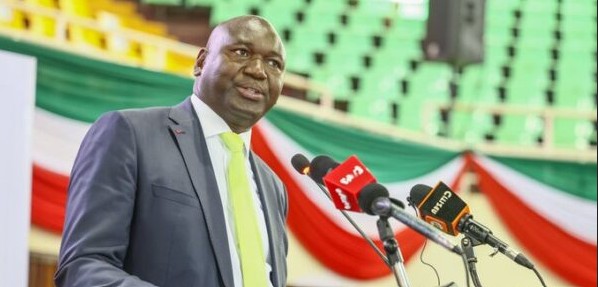By Charles Okoth
It is trial time for the Competency-Based Curriculum (CBC); the system of education which was introduced in the country close to eight years ago.
As President Ruto said during his inauguration, this system is going to be subjected to an appraisal by a committee that will be put in place soon.
As the committee gets down to business, it is advisable that some far-reaching fundamental issues be taken into consideration. That way, we will avoid a repeat of blunders we have made in the past vis-à-vis the issue of changes we have previously made in our education system.
Let it be known, ab initio, that it is essential to review our system of education from time to time. In professional parlance, this is referred to as Curriculum Development.
A curriculum can be loosely defined as the cognitive aspects which are identified by experts as the content that learners are deliberately subjected to in a learning situation. Even more loosely, it is the CONTENT of what is to be taught to learners. (I am writing this for the general public; not as a term or scholarly paper. So don’t raise your eyebrows at me, colleague pedagogues!)
For a change to occur in a system of education, many factors are considered.
The most fundamental issue is NECESSITY. Without this, it would be superfluous to change the system.
But what would necessity entail? Here are some factors:
- Failure of the current system to meet set goals/national aspirations: this could range all the way from social to political and economic. For example, if the system doesn’t have inherent factors which can lead to economic development, integration of the populace, civil discipline or ‘scruple’, then it becomes a liability instead of an asset. Remember that education is responsible for the production of HUMAN CAPITAL, which is the greatest form of capital a nation can have. Without it, the nation has a very special form of poverty.
- Sustainability: the important question here is whether or not the education system is such as can really be provided by the state under prevailing circumstances; be they economic, political, social, and so on. A little example here: can we teach swimming in our schools? I ask this because I watched a swimming lesson in one school. It was a video on social media. The poor students were swimming on a pool of earth and granite! They were encouraged to hit the surface of the granite water hard, and pull ahead. This was a CBC lesson on swimming, which, as an educator, I felt was dangerous nonsense, and a waste of public time.
- Compatibility: a system of education should be compatible with international standards. One important course in education training is Comparative Education. In this course, students are taught about several systems of education, in different parts of the world. One would then see the pros and cons of these systems, and see if perchance they would not be relevant for a local situation. This way, the good in another system can be adopted, and adapted; the aim being to better a local system: quod erat demonstrandum.
The above are just but a few key considerations. I must hasten to add that even if they have been identified, there is a system of adopting a change. It is important to follow it, since it will get rid of all the grey areas in the new system. It will make the new system more objective (all-embracing), rather than subjective (a system relevant to an individual, or a few of them, and localized in time and space, as it were).
Key among these procedures are the following:
- Identifying the system;
- Working out the RATIONALE of the new system;
- Piloting the system in a few schools chosen in a determinate way;
- Evaluating the system’s workability in those schools (the goodness of the system will come out clearly from these evaluations. If it shows failure, it is abandoned at that stage. This is what happened to SSP system in the late 70s.)
- If the system is agreeable, it is sold to the public. If the public finds it agreeable, it is then adopted and rolled out.
- For this to happen, sufficient relevant learning materials and personnel must be put in place. This involves new learning materials, and retraining of teachers.
As I said earlier, the above outline is not at a professional level, but for the general reader to get a glimpse of what curriculum change entails.
Now the big question is, was this procedure followed in the introduction of CBC? The answer is an emphatic NO.
At the time of its rolling out, Mr. Sossion, then Kenya National Union of Teachers (KNUT) Secretary General, repeatedly pointed out the grey areas of this system. It was introduced in a hurry that was suspect. Even the then Cabinet Secretary of Education, Dr. Amina Mohammed, pointed out that we were not ready for this drastic change, inasmuch as it had a rationale. As a consequence, she was unceremoniously removed and shipped elsewhere. The teachers who objected were either interdicted or, as we hear, quietly dismissed.
These actions were suspect. Why the hurry, ignoring the set procedure? It could be a good system; but why wasn’t it put through the normal test? After all, if it was good, this would simply show, very clearly. In effect, the idea could have been good, but the procedure of its adoption and implementation is the issue here. Let’s put it through the test; if it passes, well…






